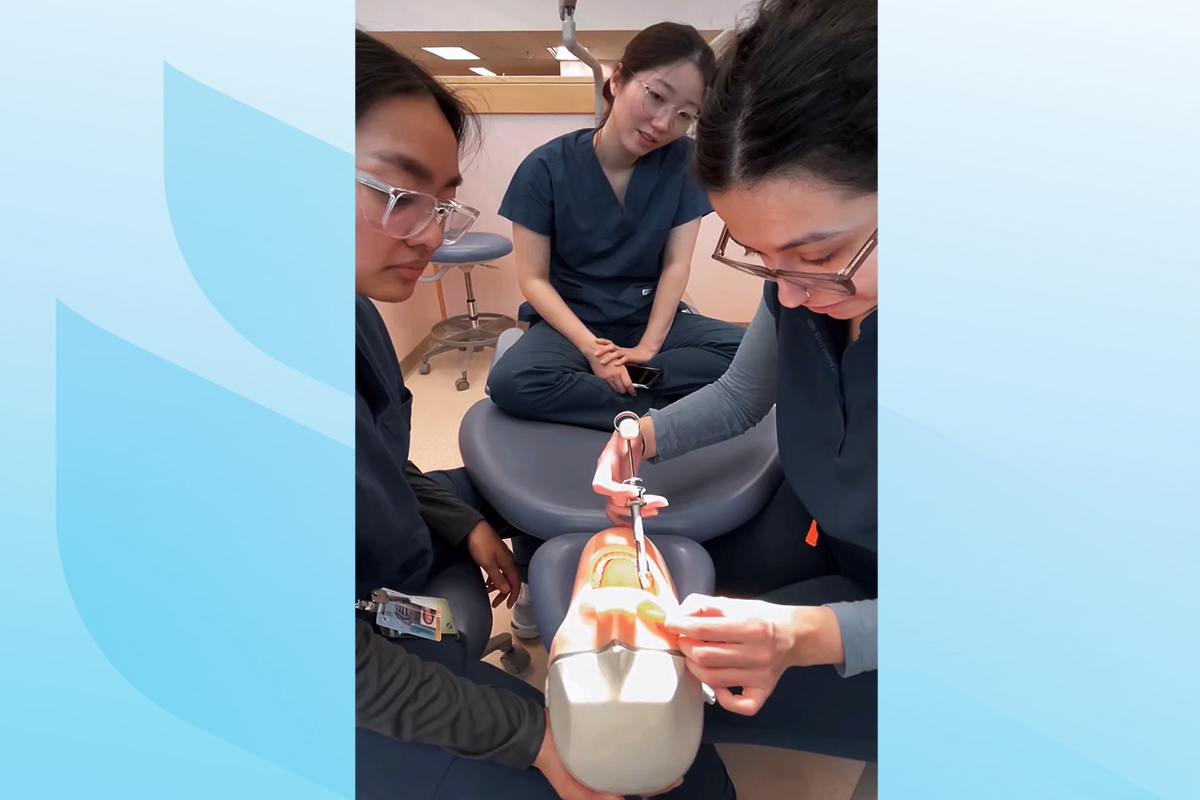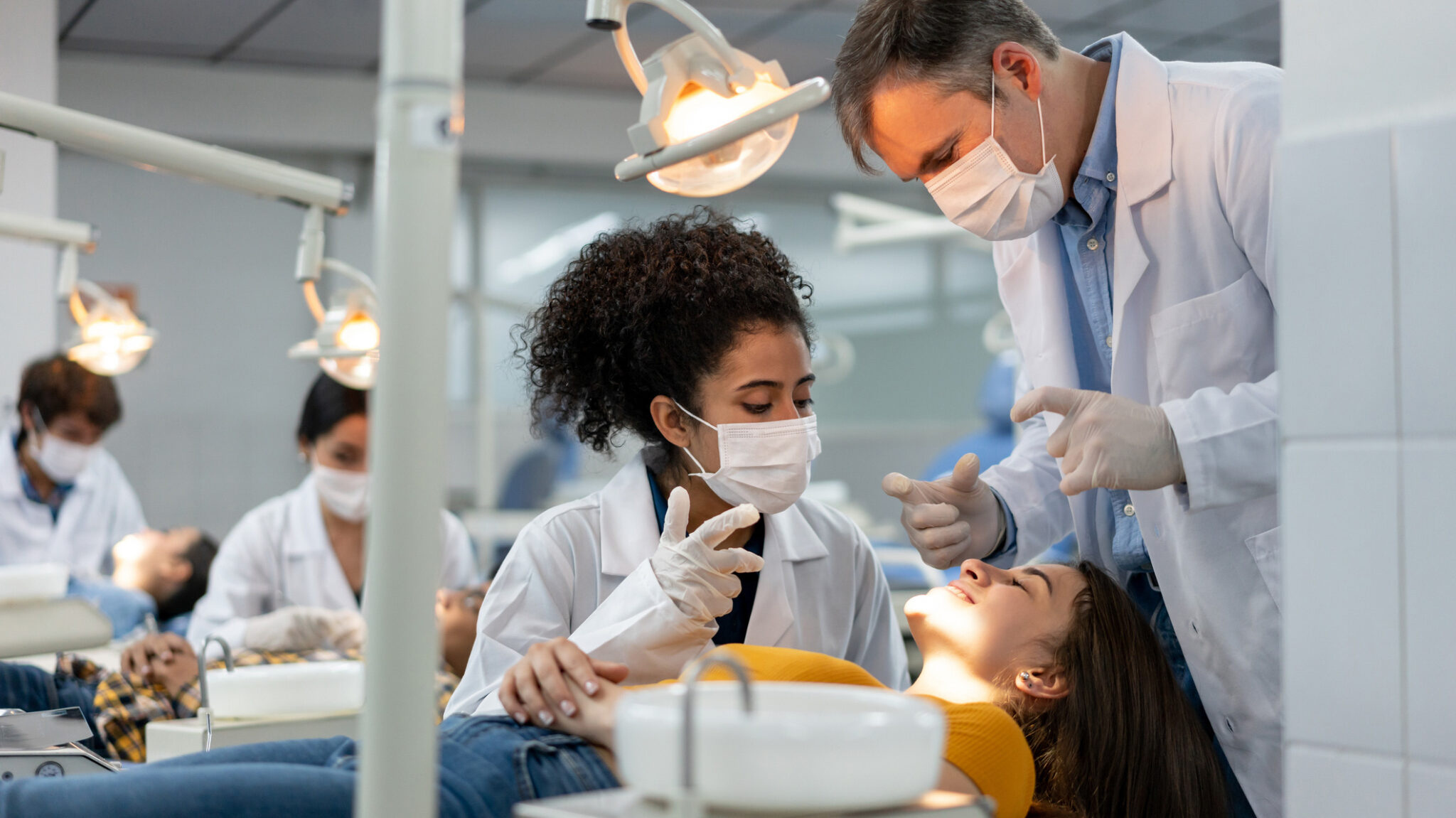UBC-developed app saves seniors a trip to the dentist

The COVID-19 pandemic highlighted how hard it can be to provide dental care to frail seniors in long-term care. But even when there’s no such crisis, access is a persistent issue. Now, a team from UBC is using teledentistry to close that gap—one securely uploaded photo at a time.
Dr. Chris Wyatt, director of the UBC Geriatric Dentistry Program, and his team are developing and testing a mobile app to streamline care for patients and provide hands-on training for dentistry students. We spoke with him about the project.
What is the ToothPortal app?
ToothPortal is a secure app that lets caregivers upload oral health concerns—along with photos, medical history and personal information—directly to our UBC servers. Patients, nurses in long-term care settings, dentists and physicians can upload information to us at the UBC Geriatric Dentistry Program. The app guides them through a series of questions: What is the problem? How urgent is it? It includes uploading medical and dental history, personal details like name and contact information, and images of the patient’s mouth, all in a secure digital environment. From there, it’s sent to our dental team for triage, so we can determine the urgency and schedule appointments.
What was the motivation for this project?
The motivation came during the pandemic, when we had restricted access to our patients and were trying to keep everybody safe. Nursing staff in long-term care settings and family members at home with elderly patients were sending us digital images taken from cell phones, texting information and phoning our staff asking for advice.
We thought, “There’s got to be a better way of doing this. Can we safely put all this information together and package it using a cell phone application?”
What challenges do people in long-term care face in accessing dental care?
Transferring a patient from long-term care to a private dental office or UBC dental clinic is very difficult. A family member has to pick them up, travel anywhere from a half-hour to two hours across the Lower Mainland, have the patient examined and then return for treatment later. That’s at least a full day’s commitment.
If we can eliminate that first “look see” appointment by bringing in information that allows us to determine the problem and its urgency, we can deliver care at that first dental visit.

How are UBC dental students involved?
Starting in January 2025, our third-year students began using the app to screen patients in long-term care. They work under supervision to collect high-quality images and data. The info is triaged by our dental team and passed to fourth-year students, who deliver the care. It’s an end-to-end educational experience—from digital triage to hands-on treatment—and it’s all happening in real time.
Can you give an example of how this helped a patient?
Our first live case was in September 2024. A nurse sent us photos of a patient’s broken front tooth, including one of their denture. Our dental team triaged the case as urgent, booked the patient the next day, and—with the family’s consent—extracted the tooth and added one to the denture in a single visit. It eliminated an appointment, and the dentist was able to provide much-needed care with prior consent more efficiently.
What’s the feedback been like?
Caregivers appreciate how quickly they get a response, and it’s reduced the number of emergency visits. Students like having images and context before a patient arrives—it lets them plan and prepare. Everyone’s learning from it, and patients benefit from faster, better-targeted care.
What do you see as the future of this technology?
The teledentistry app questions are generic enough to be used by community dentists to triage new or existing patients. In remote areas, a nurse could use the app to send clinical information to a dentist, and get expert advice on whether the patient needs to be flown out or not.
Beyond access and triage, these tools can be used for communication between patients, families, specialists and medical professionals. We can reduce unnecessary appointments by sharing information digitally for consultations and planning for care. It’s only the beginning.

Featured Researcher
Chris Wyatt
Professor and Head, Dept. of Oral Health Sciences, UBC Faculty of Dentistry
link







